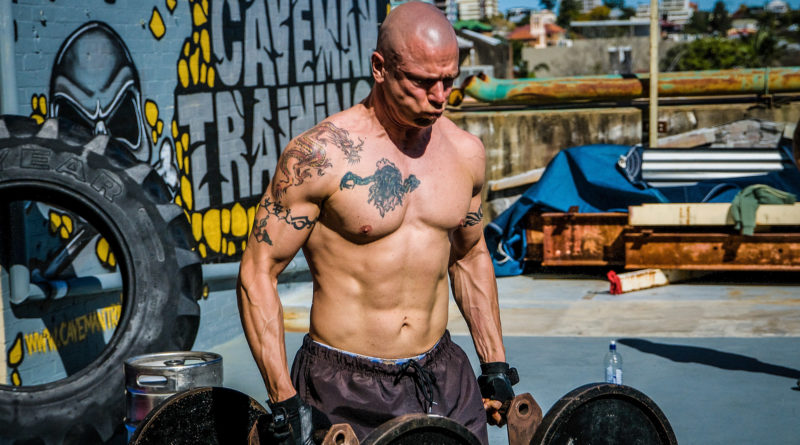5 Ways to Increase Your Training Intensity
You can only build muscle tissue if you can generate progressively stronger muscular contractions, so this calls for an emphasis on finding ways to increase exercise intensity. This should not be confused with exercise duration as maximum training intensity will actually shorten the time needed to achieve maximal muscular growth. Let’s outline 5 ways in which you can intensify your training.
Partial Repetitions
One of the biggest dangers confronting serious bodybuilders is the tendency to overtrain. Bodybuilders at the advanced level must resist the temptation to seek improvement by simply adding more exercises or extra workouts to an already demanding schedule.
One way to maintain progress yet avoid overtraining is to make constructive use of partial repetitions. This allows the introduction of additional intensity without adding significantly to the duration of training. To get the most out of partial repetitions you should follow these simple steps:
- Use a much heavier weight than you would for the full range version of the same exercise.
- Perform partial reps only from the halfway stage or mid-point of the exercise.
- Use this method primarily on lagging body parts.
- Perform only one exercise for one set per body part.
- Use only as a supplement to full range movement exercises, not instead of.
Training to Failure
Anything less than maximum effort will reduce the effectiveness of your muscle building workout. The only way to force an optimal reaction in any muscle is to train it to failure – in other words, no matter how much effort you put in you are simply incapable of completing one more rep of a given exercise.
Too many people seem to finish a set when they reach a certain number of reps, but the body will only show significant change if you ask it to do something extra. Only by passing through the break-over point of momentary muscle failure will you stimulate the muscle to grow.
Anyone starting out on their bodybuilding career should not attempt this method of training as it could lead to serious injury. Spend several months perfecting exercise form and conditioning the body to lift heavier weights before gradually introducing training to failure.
Negative Repetitions
At the most basic level, human muscles have three types of strength:
- Positive strength – the ability to raise a weight.
- Static strength – the ability to hold a weight.
- Negative strength – the ability to lower a weight.
Many bodybuilders concentrate primarily on their muscles’ positive and static strength but equal focus should be given to negative strength, or lowering the weight, if true muscle failure is to be achieved. You can emphasize this aspect of training by completing a set of negative reps after reaching positive failure.
You’ll need one or two partners to lift the weight to the top position so that you can lower it under your own control. Once you can no longer control the descent, the set ends. Take special care with leg exercises and avoid negative squats to protect the knees.
Beginners should not attempt negative reps while intermediate and advanced bodybuilders can be imaginative in how they incorporate negative reps into their training programs.
Pre-Exhaustion
When an exercise employs two or more muscles it will be impossible to achieve failure for the primary muscle as the weakest muscle will give out first. This is perhaps best explained by giving an example. When targeting the chest, most exercises involve use of the triceps which is a relatively small and weak muscle. When performing the incline bench press for example, the triceps will fail before the pectorals have the opportunity to work to failure thus limiting the value of the exercise.
How do you get around this? By first performing an exercise that isolates and tires the pectorals before immediately moving on to the main exercise. For maximum benefits there should be no rest between the pre-exhaust exercise and the main compound exercise.
Beginners don’t need to worry about pre-exhaust routines but when they advance to intermediate level they can be introduced once a week for each body part.
Examples of pre-exhaust routines commonly performed by bodybuilders are:
- Biceps – barbell curls and close-grip, palms-up pulldowns.
- Triceps – pressdowns and dips.
- Pectorals – flyes and bench presses.
- Lats – dumbbell pullovers and barbell rows.
- Deltoids – dumbbell laterals and presses behind neck.
- Traps – shrugs and upright rows.
- Thighs – leg extensions and squats.
Forced Repetitions
When you reach the point of muscular failure it is impossible to manage one more complete repetition of any exercise, at least not without losing form or correct technique. There is, however, one way in which you can increase the intensity even further and that is by completing one or more forced repetitions with the help of an experienced training partner.
The best way to achieve this is by keeping the same weights on the bar and have your training partner do no more than is necessary to allow you to complete up the three extra repetitions with good lifting form.
